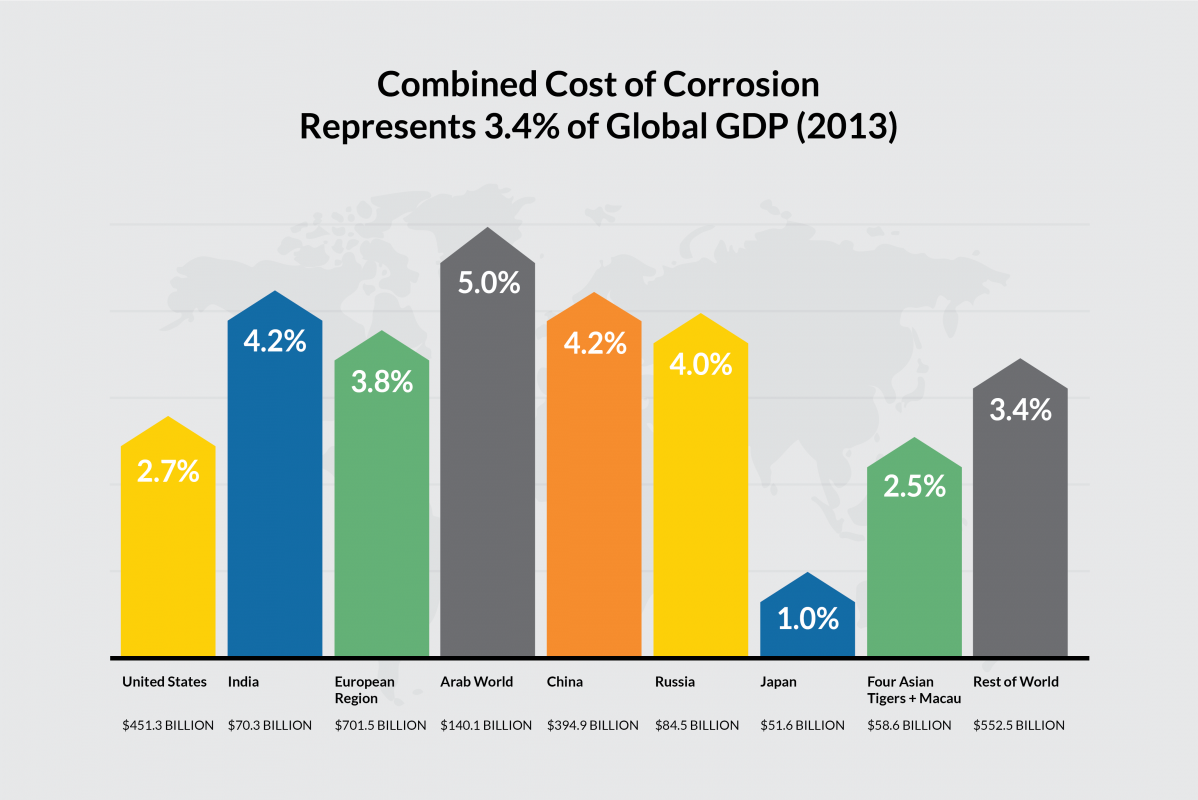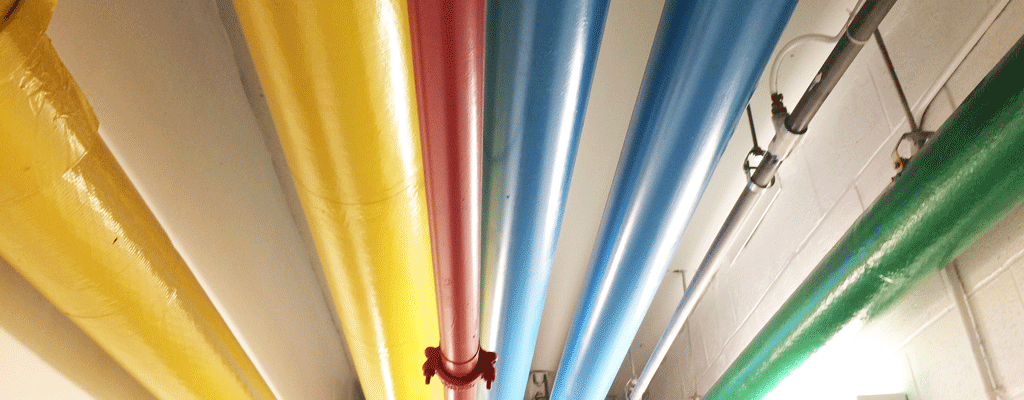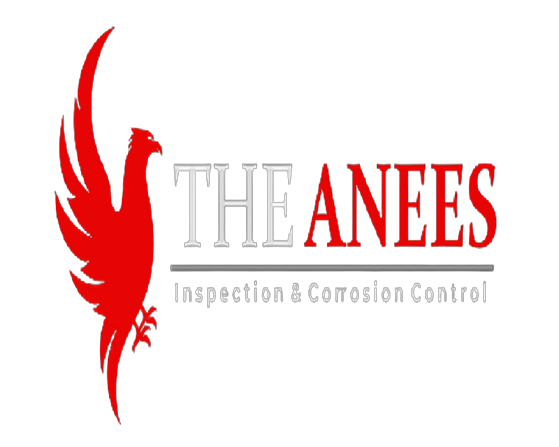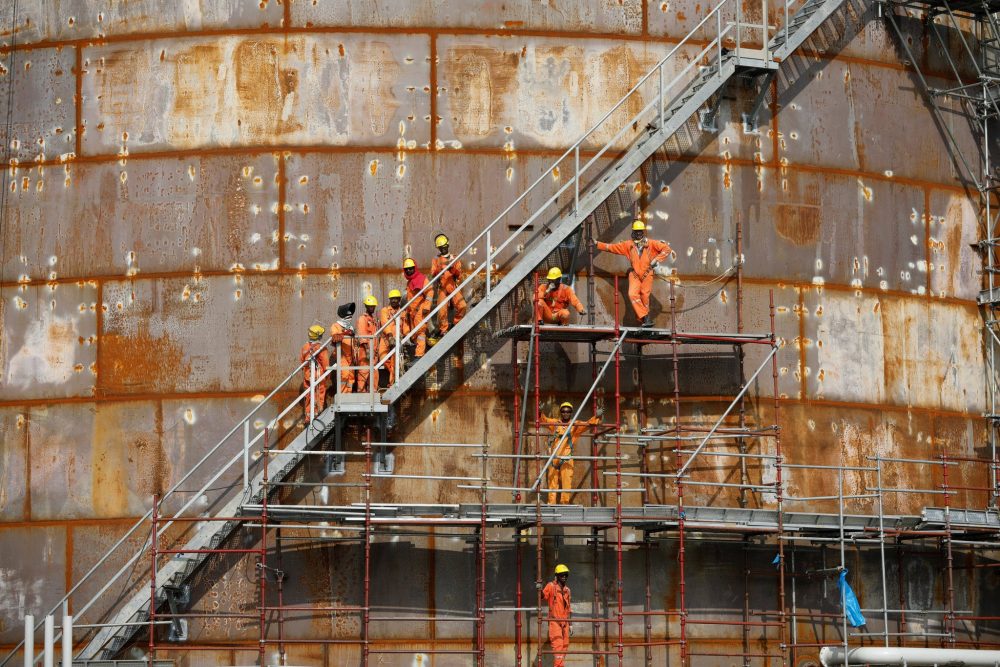Various methods can be used to reduce corrosion. One of these, referred to as the “technical approach,” covers all known mitigation strategies, including the development and use of cathodic protection, the use of inhibitors, and coating.
Basically, in general terms, we can define corrosion as the degradation of material due to its environmental effects. So, focusing on this statement, we can utilize our mitigation technologies.
A number of methods are being implemented nowadays, but some have different approaches to reaching the desired results. Selection of each corrosion mitigation technology must keep in mind the following things:
- Material of construction
- environment of specified material.
- Process contact of material
- material and process suitability and stability.
With corrosion management and corrosion-related incidents costing a massive US$2.5 trillion a year across the globe, which is equivalent to 3.4% of the global GDP (2013), it’s no wonder that advancements in corrosion mitigation technology are always evolving and eagerly awaited. referred to in the NACE study.
The automotive industry changed its approach to managing corrosion as a result of a decision made at the highest levels of the organization. This change led to cheaper corrosion-related manufacturing costs, lower corrosion-related operating expenses, and a longer lifespan for the public’s cars.
Only by implementing effective corrosion management procedures across the entire business will savings caused by corrosion’s impact be maximized. The remainder of the IMPACT research discusses corrosion management and provides details on a corrosion management system that, if used, would make it possible to realize a sizable amount of these savings.

The Duplex System: Best 2022 Anti-Corrosion Coating
A duplex system is used when hot dip galvanization is combined with a topcoat of liquid or powder steel corrosion protection coatings. The system offers the strongest protection and long-lasting effects. The system must function properly for each layer to be compatible with one another. For corrosion categories C3 to C5, duplex systems are especially suitable. One of the best steel corrosion protection coatings is created by the duplex system, which consists of five protective coatings to ward off corrosion.
Mitigation of Corrosion By Corrosion Inhibitors
A corrosion inhibitor is a chemical that is used in a certain environment, such as air or water, to slow down the rate of corrosion of the metal exposed to that environment. Corrosion inhibitor, or CI, is an acronym. Corrosion, metal rusting, and anodic corrosion are stopped by inhibitors. This is often accomplished by covering the metal surface with a layer of chromate. Corrosion is a problem for metal pipes in heating systems. CIs are crucial for protecting these pipes as well. Fuel pipeline corrosion and rusting must be avoided at all costs. In order to secure these pipelines and lower the likelihood of accidents, CIs are crucial. There are three types of corrosion inhibitors:
- Anodic inhibitors
- Cathodic inhibitors
- Mixed inhibitors
Coating for protection from environmental effects
When properly placed, protective coatings are a common and highly effective method of preventing corrosion. And it’s not just paint; any persistent film that separates metal from its surroundings and delays the electrochemical reactions that cause corrosion is thought to constitute a protective covering.
A common option is liquid-applied coatings that dry to form solid films over metal surfaces. These coatings frequently include corrosive-inhibiting chemical additives or zinc (an unstable metal) to provide galvanic protection. Anodic or cathodic metal films added to parts by galvanizing, electroplating, or thermal spraying serve as another form of protective coating.
For more about the difference between coating and painting,

Preventation of Corrosion by Cathodic Protection
Remember that one of the four elements necessary for corrosion to occur is a cathode—a place where metal does not corrode. To combat corrosion with cathodic protection, we must set up a situation where the tank and/or its piping become a cathode. This is accomplished by creating a flow of electrons onto the surface of the metal. The corrosion then happens at the place that is producing the electrons (the anode). The anode will deteriorate over time and will need to be replaced, but as long as the anode is providing enough electrons, your tank and/or piping will be a cathode and will not corrode. There are two techniques for creating this flow of electrons from the anode to the cathode: galvanic CP and impressed current CP.

